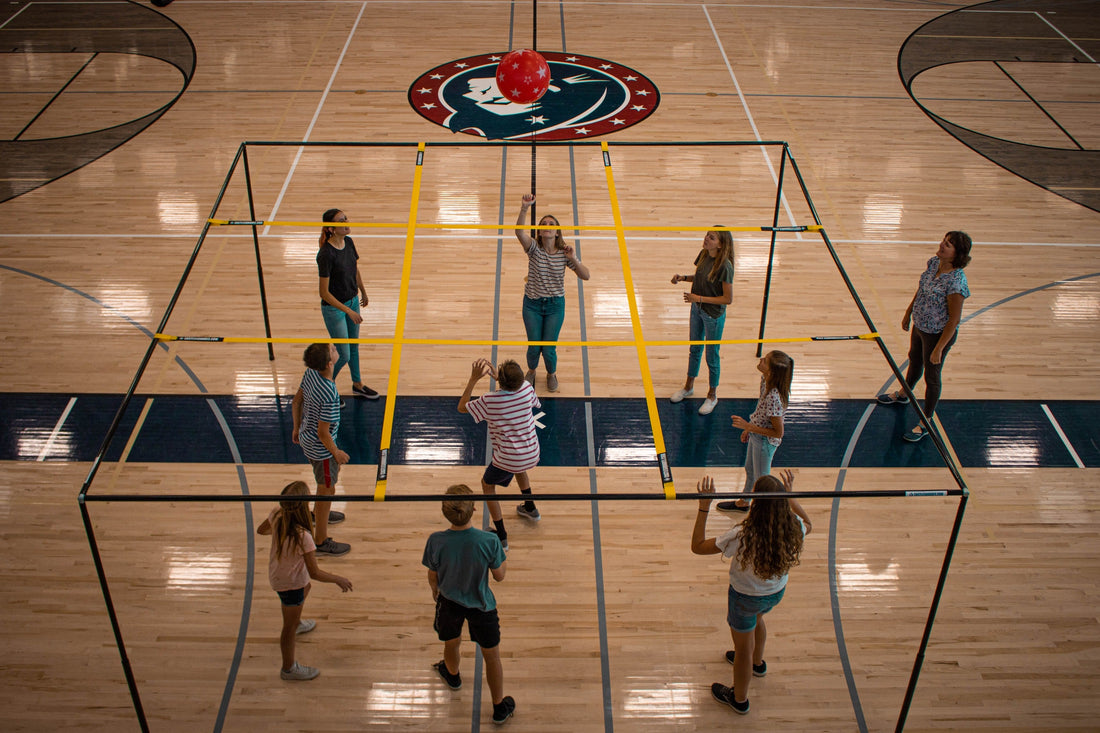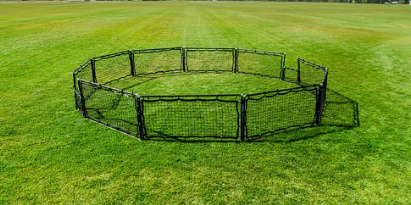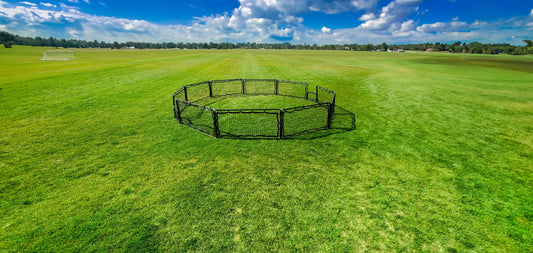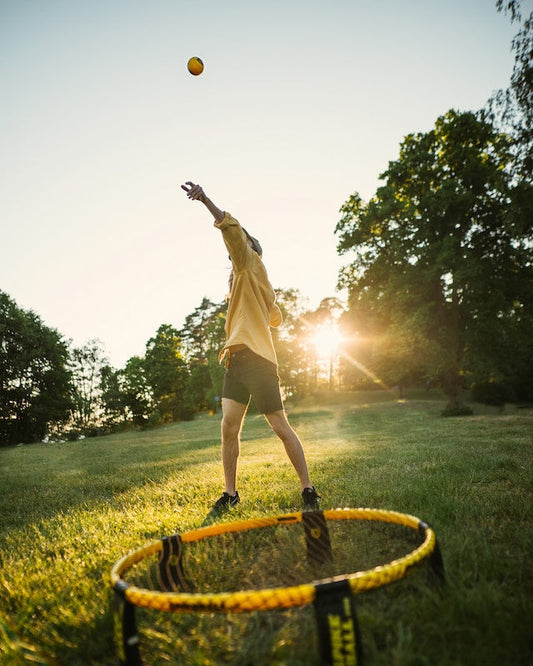Including games and fun physical activities can make your PE class more fun and more entertaining. In this article, you will find everything you need to know about including games in your high school or middle school PE class.

The Vital Role of Games in Physical Education
Why Games are Essential in PE
Games are the heartbeat of Physical Education (PE), sparking a passion for physical activity in students and encouraging active lifestyles beyond the school's boundaries.
Physical Education is a staple in most middle and high schools, serving as a crucial daily dose of physical activity. The Mayo Clinic underscores the need for "150 minutes a week of moderate aerobic activity or 75 minutes a week of vigorous activity." Regular exercise not only enhances sleep quality and energy levels but also stands as a formidable barrier against numerous health concerns, including heart disease and depression. PE classes are more than just a school requirement; they're a launchpad for instilling lifelong fitness habits in students through a variety of cardiovascular fitness. These classes offer a kaleidoscope of fun, engaging ways to stay fit, introducing students to a variety of exercise forms improving their knowledge of health education.
However, the traditional approach of repetitive exercises like continuous track laps can dull the students' enthusiasm for physical fitness. PE classes has a unique opportunity to offer a special education to break the monotony with invigorating games and diverse physical activities. These not only teach essential fitness skills but also instill a genuine love for exercise, inspiring students to remain active outside the school environment.
Can High Schoolers and Middle Schoolers Enjoy the Same PE Games?
Absolutely! The beauty of PE games lies in their universal appeal across different age groups.
While each high school student and middle school student often have distinct cultures, this doesn't necessitate completely separate PE routines. Games suitable for middle schoolers can be equally captivating for high school students, albeit with a notch up in pace and competitiveness. The key is the shared experience of enjoyment and engagement.
PE teachers should be attuned to the varying skill levels within their classes. It's essential to tailor each session to match the students' fitness abilities and enthusiasm for physical activity. This could mean adapting activities for those less accustomed to vigorous exercise or introducing novel, low-intensity games like makeshift bowling or frisbee. The goal is to design a PE curriculum that resonates with every student, regardless of their fitness level or grade, ensuring that each child finds joy and challenge in every PE lesson.
What Are the Best PE Games for Indoor and Outdoor?
Some of the best games include nine-square, dodgeball, and badminton. Of course, you'll need a steady rotation of games to keep your students engaged day after day.
Finding the best PE games for your students might seem daunting. To make things easier for PE teachers and assistants, we've collected eight of the best games and activities for students of all ages. The top eight games for both high school students and middle school students are:
- 9 Square
One of the most popular high school and middle school PE game is 9 Square. 9 Square is a portable variation of the classic school-yard game four-square. To play 9 Square, you will need a simple portable court. The game is set up in a few minutes and can be played as an indoor game or an outdoor game, depending on the weather. The court is set up above your head, with nine squares made out of sturdy poles and straps or nets. Each student stands below a square, claiming that area. The middle of the three-by-three grid is the "king" or "queen" zone. The goal of the game is to make it to the middle square

When the round starts, the king or queen starts with the ball. He or she hit it up and out of his or her square and into another square. When the ball passes into another square, the ball becomes that person's play, and they have to hit it up and out of their square without the ball leaving the court. If the ball is hit out of the court or if the ball hits the ground, the person at fault is out of the game. The players in squares move up to fill the empty space, and a new player from the waiting line takes the ninth square. You can learn more about the rules of 9 square by visiting Castle Sports.
Nine-square is a perfect game for large groups because it incorporates nine people at the same time and has an ever-rotating group of players. This stops the game from becoming exclusive towards specific students and encourages students to make friends with other faces. Nine-square is also a great game because you can have multiple games happening simultaneously without taking up a lot of room. Playing nine-square is a fun way for students of all ages (from elementary PE to high school) to exercise and enjoy physical activity.
- Capture the Flag
Another game that's easy to play is capture the flag. Capture the flag is a common game in both middle and high school. It requires the players to run back and forth either on offense or defense. If you have a group of competitive students, this game is perfect. Capture the flag is best played outdoors on grass or turf.
To play the game, separate the students into two groups, and each student is given a flag that is secured loosely to their waist. Both groups will also have a team flag that they need to protect located on the far side of their half of the field. Each team will need to protect their flag from the offense of the other team. The groups can decide to work together to steal the other team's flag, or they can work individually. If a person crosses to the other side, their personal flags are now vulnerable, and the opposite team can grab the flags from their waist. If the person's individual flag is taken, the person is sent to the opposite team's "jail." Teammates can be saved from jail if another member of the team tags those people. Once a jailed member has been tagged, they must return to their side of the field. The first team to successfully steal the other team's flag and return it to the other side of the field wins the game.
Capture the flag is extremely active and encourages students to run and bond. It can be played as a middle school game or a high school game as long as students are willing to participate. PE teachers should also be aware of the temperature outside and ensure that the temperature isn't too hot or cold to have the students sprinting up and down the field.
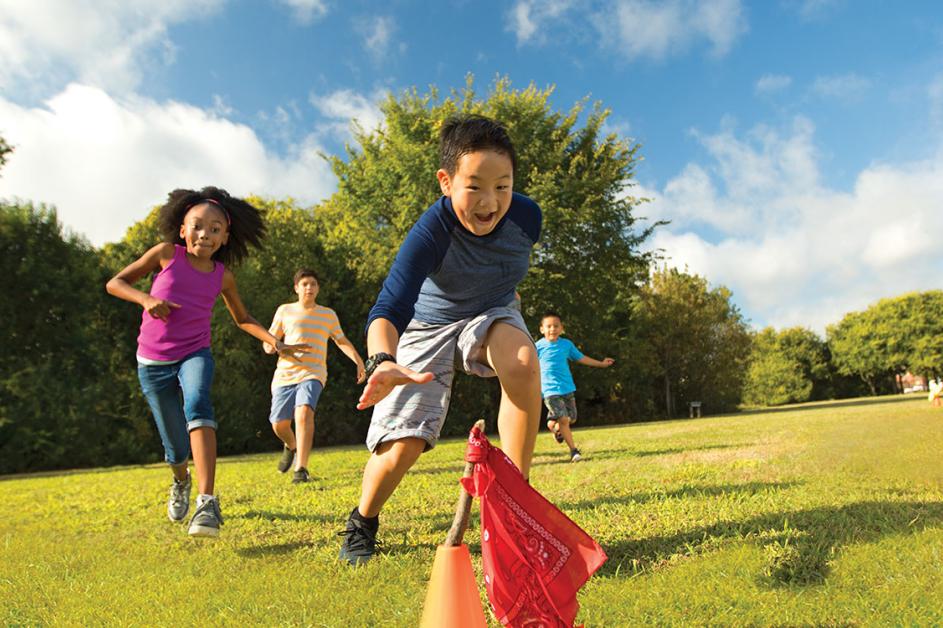
- Dodgeball
Dodgeball is a simple, classic game that students can play indoors. To play dodgeball, you will need at least ten rubber balls. The balls used in the game should be bouncy and soft to limit injuries. You will need to clarify that headshots don't count in order to encourage students to aim away from the heads of other students. The game rules are simple; the first team with no active players is the losing team.
To play, separate the class into two teams and place them in clearly marked areas. In the center of the playing area, line up all of the balls used in the game. The teams will line up on the far border of their playing area, furthest away from the center. When the teams are ready, blow a whistle, and both teams will run to the center and grab as many balls as possible. They will then throw the balls at the other team, trying to hit as many people as possible. If a ball thrown by the opposite team hits a player, then that player is out of the game. If the person catches the ball thrown by the opposite team, the person who threw the ball is out of the game. Balls that are out of the square can be thrown back into the game by the PE teacher.
Once all members of one team are out, the team with players still in the game wins. Typically, this game can take up to 15 minutes to complete. At the end of the game, switch up the teams and repeat with the same rules.
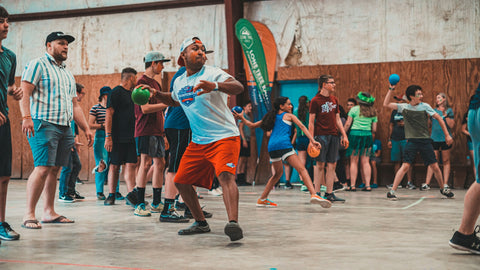
- Volleyball
Volleyball is another one of the fairly active team sports that can be played with competitive students or passive students offering a great teamwork based activity. To play volleyball, the school will need to have volleyball nets and ports in the gym where the volleyball poles can be installed. Volley isn't the most portable game and is limited to where the setup is possible. However, if volleyball is possible in your gym, it's a great game to introduce to your students. Most students are familiar with the rules of volleyball.
You will need six students on either side of the net. One team starts with the volleyball, and the back right corner of the team serves the ball. The server will try to hit the ball over the net to the other team. The opposite team can hit the ball three times before the ball must be hit over the net and back to the serving team. A point is scored every time the ball hits the ground. The goal of the game is to be the first to score 21 points.
Competitive students will enjoy playing volleyball because it allows them to work as a team to win against another team. However, competitive students may get frustrated with less motivated team members if they aren't willing to play the game. Because of this, it may be helpful to let friends pick their own teams.
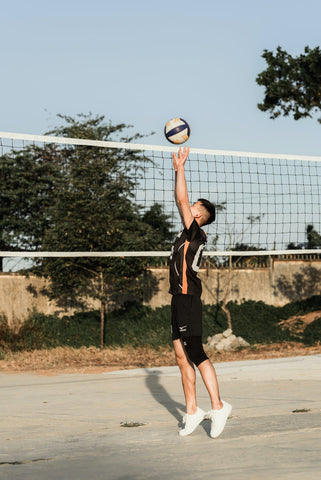
- Badminton
Badminton is a popular sport for both middle schoolers and high schoolers. This also offers a unique activity for any physical education class. At a non-competitive level, it is a low-energy sport that almost anyone can play as long as they have a basic level of hand and eye coordination. To play, you will need to set up badminton nets across the gym. Because only four people can play at one time, you will need quite a few nets in order to have everyone playing the game. Rather than solely playing badminton, this sport might be paired best with another activity happening at the same time.
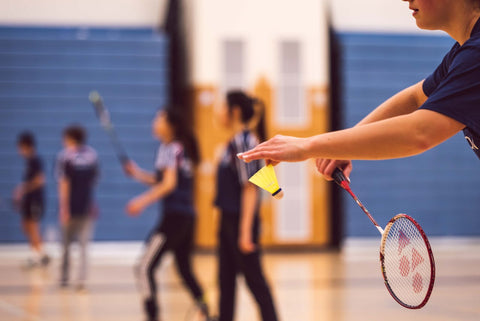
The rules of badminton are:
"The aim of badminton is to hit the shuttle with your racket so that it passes over the net and lands inside your opponent's half of the court. Whenever you do this, you have won a rally; win enough rallies, and you win the match. Your opponent has the same goal. He will try to reach the shuttle and send it back into your half of the court. You can also win rallies from your opponent's mistakes: if he hits the shuttle into or under the net, or out of court, then you win the rally. If you think your opponent's shot is going to land out, then you should let it fall to the floor. If you hit the shuttle instead, then the rally continues. Once the shuttle touches the ground, the rally is over."
Badminton is a fun game that can be played at a basic level. If you have access to enough nets, you can set up the game as a tournament style, where the winners will move up to a King and Queen net while the losers will move down. At the end of the class period, you can have a match between the two best players. This will give a chance for the competitive students to work hard during the matches and have an incentive to win the game.
- Kickball
Kickball is another fun game for competitive students. Kickball is an outdoor game that should be played in a baseball diamond. The game itself has the same rules as baseball, but the baseball has been replaced with a red rubber ball. Instead of the pitcher throwing the ball at high speed, the ball is rolled on the ground towards a kicker. The kicker kicks the ball as hard as they can and runs for the first base. Kickball is a simpler version of baseball and is easy to play for those unable or unwilling to play baseball.
The game can be high intensity, or it can be fairly relaxed, depending on who has stepped onto the playing field. For PE teachers looking for an easy outdoor sport to play with the class, kickball is a great option. The game can also be modified to be played indoors; however, outdoors is where this game blossoms.

- Freeze Tag
Freeze tag can be played indoors in the gym or outdoors on the grass. It's a simple game that requires no preparation or equipment, making it ideal for warm summer days when you want to get the students outside in the sun or for rainy indoor class days. Additionally, everyone plays the game at the same time, meaning that there's no waiting line or queue where students wait to be included. Everyone is included at the very beginning of the game.
To play, one person starts the game as the tagger. That person runs and tries to tag another student. When someone is tagged, they become "frozen" and can't move. The game continues until only a few people are left, and most of the group is frozen. There are also variations of the game where there are multiple taggers, and those who are frozen can be freed when tagged by another free player.
Another variation of the game is sharks and minnows. With this game, one person starts as the "shark." They stand in the middle of a playing field, and all of the "minnows" line up on one side of the field. When the PE teacher blows the whistle, all the minnows run to the line on the opposite side of the playing field. This means that the minnows will have to run past the shark. The shark will try to tag as many minnows as possible as they run past him or her. Once the minnows have made it to the other side (not including those who have been tagged), the game begins again. For the next round, all the tagged minnows now become sharks. The game gets harder and harder for the minnows as the number of sharks increases each round until there is only one minnow left.
- All Sports Out
When the PE teacher isn't sure which sport to pick, they can always pick "All Sports." This simply means that the teacher will get all of the sports and let the students pick which game is most appealing to them. In one corner of the gym, the 9square game will be set up, and nine students will be playing that game. In another corner of the gym, a volleyball game will be up and ready to go. In the center of the gym, the teacher can set out jump ropes, hula hoops, basketball and other games that entertain a smaller group of students. When the teacher chooses "All Sports," it means that the students will get to pick which activity they want to play for the day. This will also give the teacher an idea of what the students enjoy most since that activity will have the most students playing that game.
In PE, the most important aspect of a successful game is that all students feel included. As long as all students are laughing and having fun, your class has been successful.

